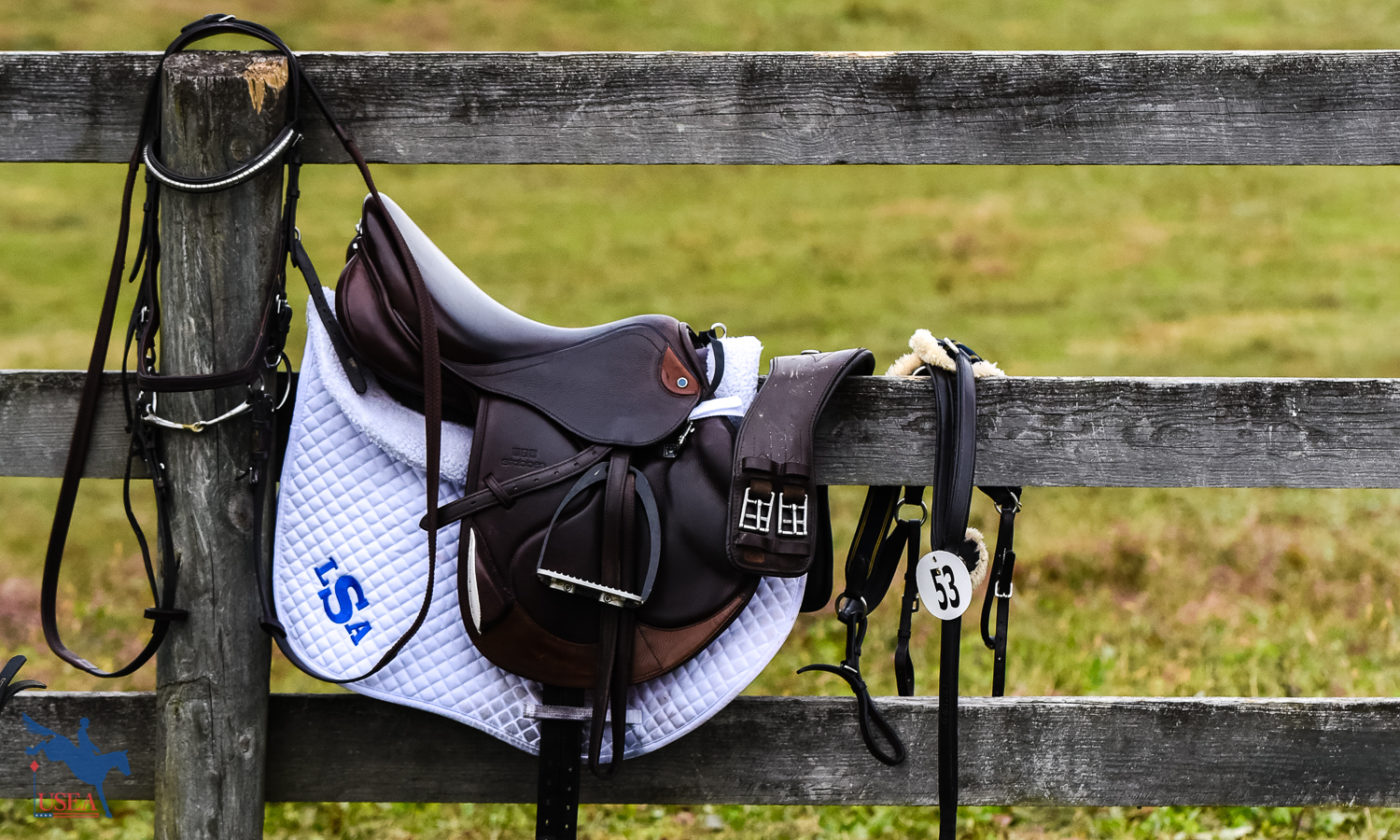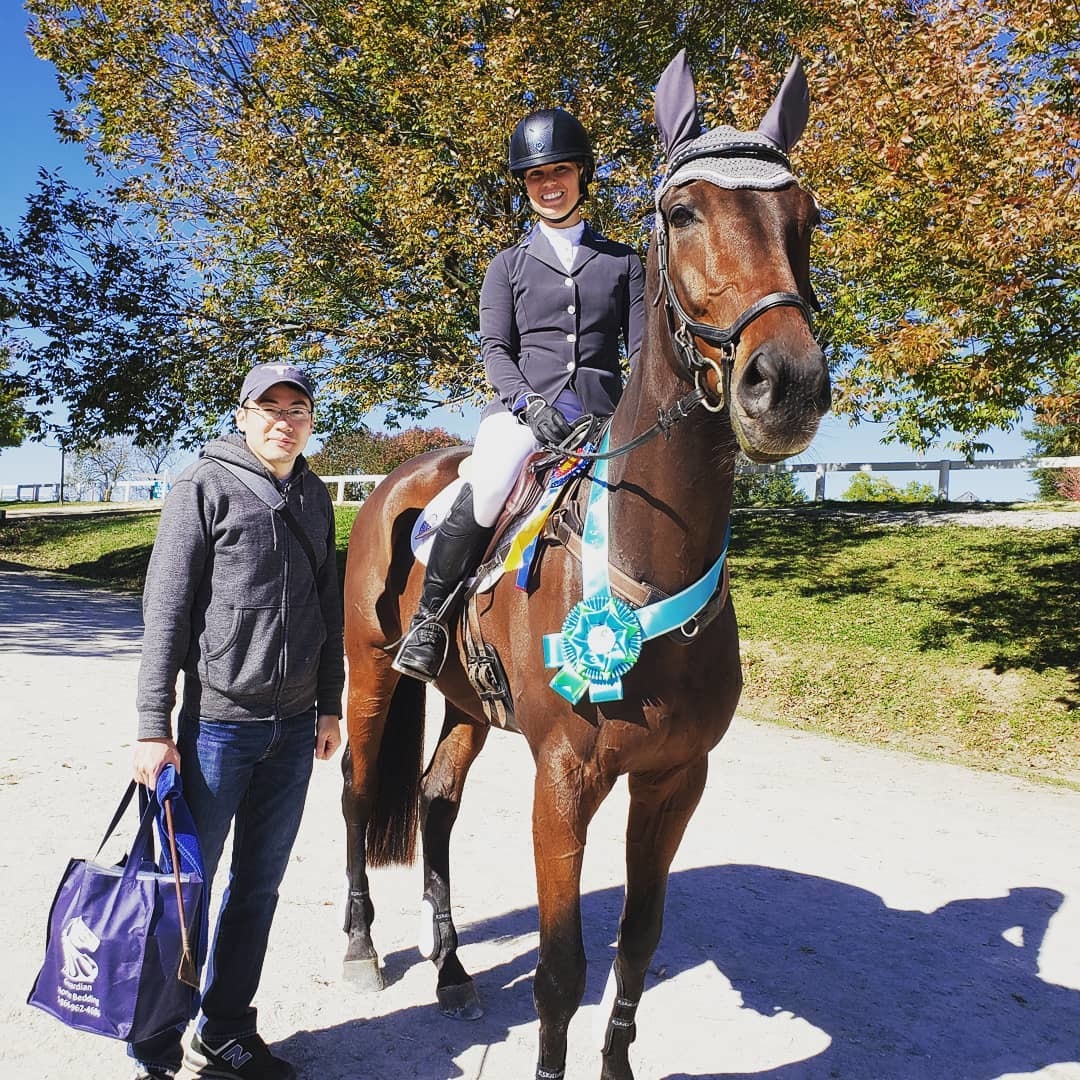Renew Your USEA Membership for the 2023 Season Today LEARN MORE

In 2009, Maggie Deatrick competed at one of the last FEI recognized long formats, the CCI* at Midsouth Horse Trials. Finishing in third place with her off-the-track Thoroughbred gelding, Divine Comedy, Deatrick explained, “It was one of the highlights of my career with him, even after we moved up the levels and tackled our first CCI4-S together.” From that experience, she knew she wanted to do a USEA Hylofit Classic Series event with her younger horse, Cthulhu, before the move up to Preliminary level. Nine years later from her first long format event, she entered Cthulhu in the Training Three-Day at the 2018 Midsouth Three-Day Event. With the first hiccup starting on the Thursday of the event, Deatrick gained valuable and memorable experience from Midsouth’s Training Three-Day.
Due to a change in the show’s schedule, Deatrick was unable to attend one of the educational sessions. “The session for calculating your times on roads and tracks ended up in the evening on Thursday, right when my husband was arriving at the airport an hour away. So, despite my best efforts to schedule his flights around this particular session, I ended up unable to attend,” said Deatrick. From there, Deatrick breaks down her calculations and what went wrong on endurance day.

“For phase A, I reviewed the course map to determine the meters of the phase, then divided that by the optimum time so I had a meter mark for each minute. On my card, I wrote down which meters I needed to be at or between at each minute. I wanted to finish phase A approximately 30 seconds early, so I knew I wanted to hit my last meter mark around 15 seconds ahead of the time I had marked on my card.”
“Phase B is easy....go fast! I was surprised at how fast [Cthulhu] moved [as] he can be very lazy. But we finished 42 seconds inside the optimum time, easing up for the final third of the course. He was not breathing heavily at all when pulling up, even though we were much faster than I had planned.”
“This is where I went wrong. Because I finished phase B 42 seconds early, my time for phase C started forty-two seconds earlier than I had accounted for. But I had forgotten that the gain of time on B was not given back to me for phase C, and all of my times on my reference card were marked on the assumption that I finished on optimum time. I accumulated 26 time penalties on phase C, as I utilized my markers instead of subtracting forty-two seconds from each of them.”
“As a result, I highly recommend re-starting your watch on C as soon as you cross the finish, then slow your horse down. Mark your phase C markers identical to phase A, and plan to get to the finish flags prior to the box 15 seconds early.”

A couple additional recommendations Deatrick has for Classic Series competitors is to be familiar with both the roads and tracks and steeplechase courses. “I hacked around roads and tracks on my horse and made sure to find all the gates. This is important because we had at least one gate off to the side that would have been extremely easy to miss. I did only do this once but would recommend doing it twice for folks who might have trouble remembering their course.”
“I walked around the steeplechase course once. This turned out to be quite handy; our course looped around a polo field and the obvious route around the first turn was to go inside of the scoreboard placed at the end. However, once I walked it, I felt that it was too tight to make the inside turn at steeplechase speed and that the outside line would be the better choice. Similarly, there was a turn at the end around the ropes that I felt was pretty tight and I decided that if I was up on the time I would slow up and balance a bit around that turn. That turned out quite well, as I was well up on my time when I made the turn before the fifth and final fence.”
The timing, navigating, and scoring of Phase A-D can be complex for every classic competitor, whether it’s first-timers or experienced competitors like Deatrick. Follow the USEA Classic Series Guidelines for more details on endurance day.
The Hylofit USEA Classic Series keeps the spirit of the classic long format three-day events alive for Beginner Novice through the Preliminary levels. Competitors can experience the rush of endurance day, including roads and tracks, steeplechase, the vet box, and cross-country, as well as participate in formal veterinary inspections and educational activities with experts on the ins and outs of competing in a long format three-day event. Riders who compete in a Hylofit USEA Classic Series event during the year will have the chance to win a variety of prizes at the events from USEA sponsors. Click here to learn more about the Hylofit USEA Classic Series.
The USEA would like to thank Hylofit, FLAIR, SmartPak Equine, Stackhouse & Ellis Saddles, and Parker Equine Insurance for sponsoring the Hylofit USEA Classic Series.
Now available to purchase, the Hylofit system hit the marketplace in 2018. The Hylofit system is the only equine wearable to offer in-ride feedback for horse and rider. Hylofit’s state-of-the-art product is designed to maximize communication between horse and rider, improve training results, and promote the overall health and well-being of the horse. Hylofit unique features include real-time feedback, post-ride insights, rider insights, overall well-being of the horse and rider, zone training, sharing features, video features, weather impact features, and more. The Hylofit system that tracks both horse and rider’s heart rate is comprised of four hardware components, an app for iOS or Android, and an optional app for the iWatch.
Hylofit is generously providing a 10 percent discount for Hylofit products to all USEA Classic Series competitors! Hylofit will also provide 11 Hylofit systems to the high scorers of each USEA Classic Series event at the 2019 USEA Annual Meeting & Convention.